
Homebuilder (NYSE: DHI) reported Q4 CY2024 results exceeding the market’s revenue expectations, but sales fell by 1.5% year on year to $7.61 billion. On the other hand, the company’s full-year revenue guidance of $36.75 billion at the midpoint came in 0.9% below analysts’ estimates. Its GAAP profit of $2.61 per share was 10% above analysts’ consensus estimates.
Is now the time to buy D.R. Horton? Find out by accessing our full research report, it’s free.
D.R. Horton (DHI) Q4 CY2024 Highlights:
- Revenue: $7.61 billion vs analyst estimates of $7.08 billion (1.5% year-on-year decline, 7.6% beat)
- Adjusted EPS: $2.61 vs analyst estimates of $2.37 (10% beat)
- Adjusted EBITDA: $1.18 billion vs analyst estimates of $1.07 billion (15.5% margin, 10.3% beat)
- The company reconfirmed its revenue guidance for the full year of $36.75 billion at the midpoint
- Operating Margin: 14.6%, in line with the same quarter last year
- Free Cash Flow was $633.4 million, up from -$201 million in the same quarter last year
- Backlog: $4.3 billion at quarter end, down 21% year on year
- Market Capitalization: $47.37 billion
David Auld, Executive Chairman, said, “The D.R. Horton team delivered strong results in our first fiscal quarter of 2025, highlighted by earnings per diluted share of $2.61 on consolidated revenues of $7.6 billion. Consolidated pre-tax income was $1.1 billion with a pre-tax profit margin of 14.6%, enabling us to return $1.2 billion to shareholders through share repurchases and dividends during the quarter."
Company Overview
One of the largest homebuilding companies in the U.S., D.R. Horton (NYSE: DHI) builds a variety of new construction homes across multiple markets.
Home Builders
Traditionally, homebuilders have built competitive advantages with economies of scale that lead to advantaged purchasing and brand recognition among consumers. Aesthetic trends have always been important in the space, but more recently, energy efficiency and conservation are driving innovation. However, these companies are still at the whim of the macro, specifically interest rates that heavily impact new and existing home sales. In fact, homebuilders are one of the most cyclical subsectors within industrials.
Sales Growth
A company’s long-term sales performance can indicate its overall quality. Any business can put up a good quarter or two, but many enduring ones grow for years. Over the last five years, D.R. Horton grew its sales at an incredible 15.2% compounded annual growth rate. Its growth beat the average industrials company and shows its offerings resonate with customers.
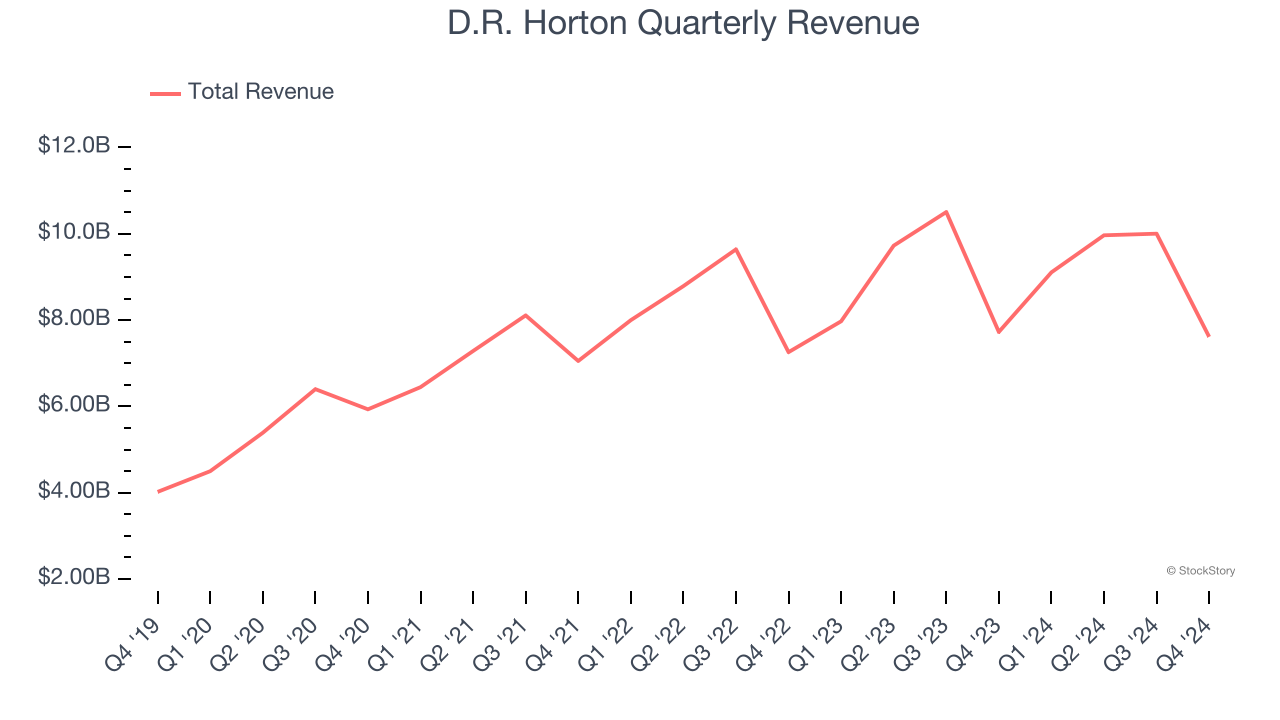
We at StockStory place the most emphasis on long-term growth, but within industrials, a half-decade historical view may miss cycles, industry trends, or a company capitalizing on catalysts such as a new contract win or a successful product line. D.R. Horton’s recent history shows its demand slowed significantly as its annualized revenue growth of 4.4% over the last two years is well below its five-year trend. 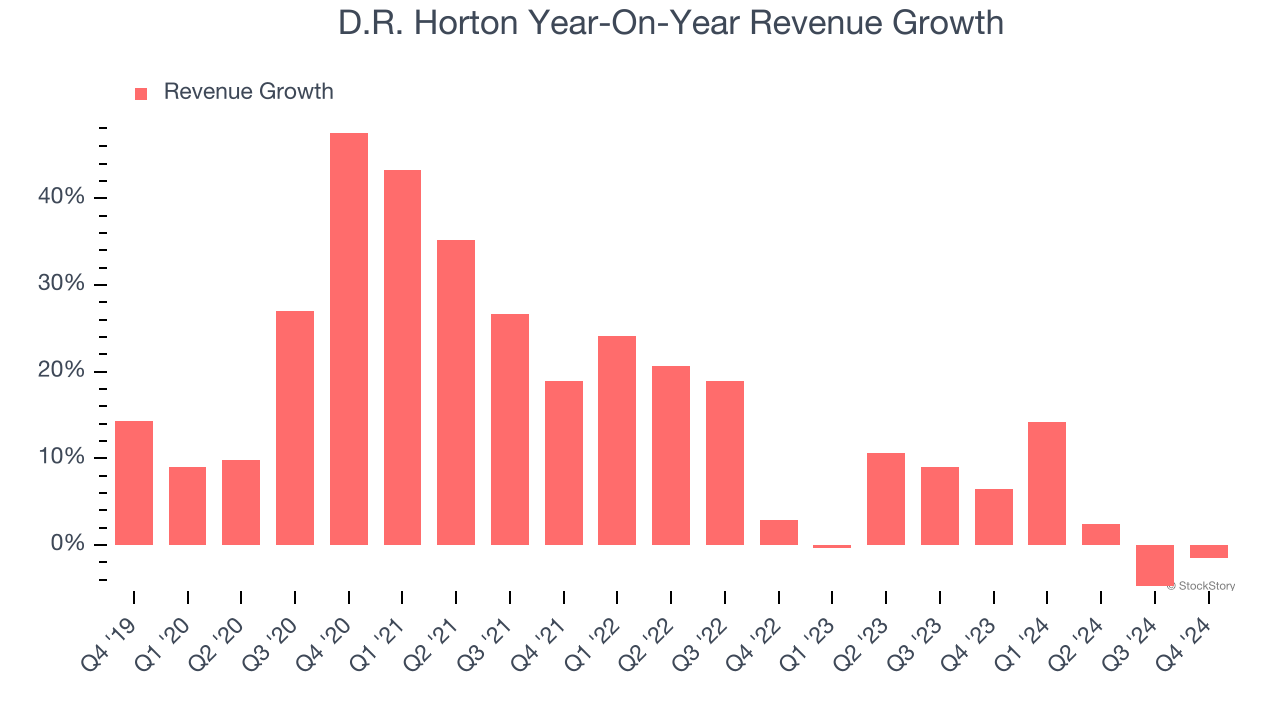
We can better understand the company’s revenue dynamics by analyzing its backlog, or the value of its outstanding orders that have not yet been executed or delivered. D.R. Horton’s backlog reached $4.3 billion in the latest quarter and averaged 22.2% year-on-year declines over the last two years. Because this number is lower than its revenue growth, we can see the company hasn’t secured enough new orders to maintain its growth rate in the future. 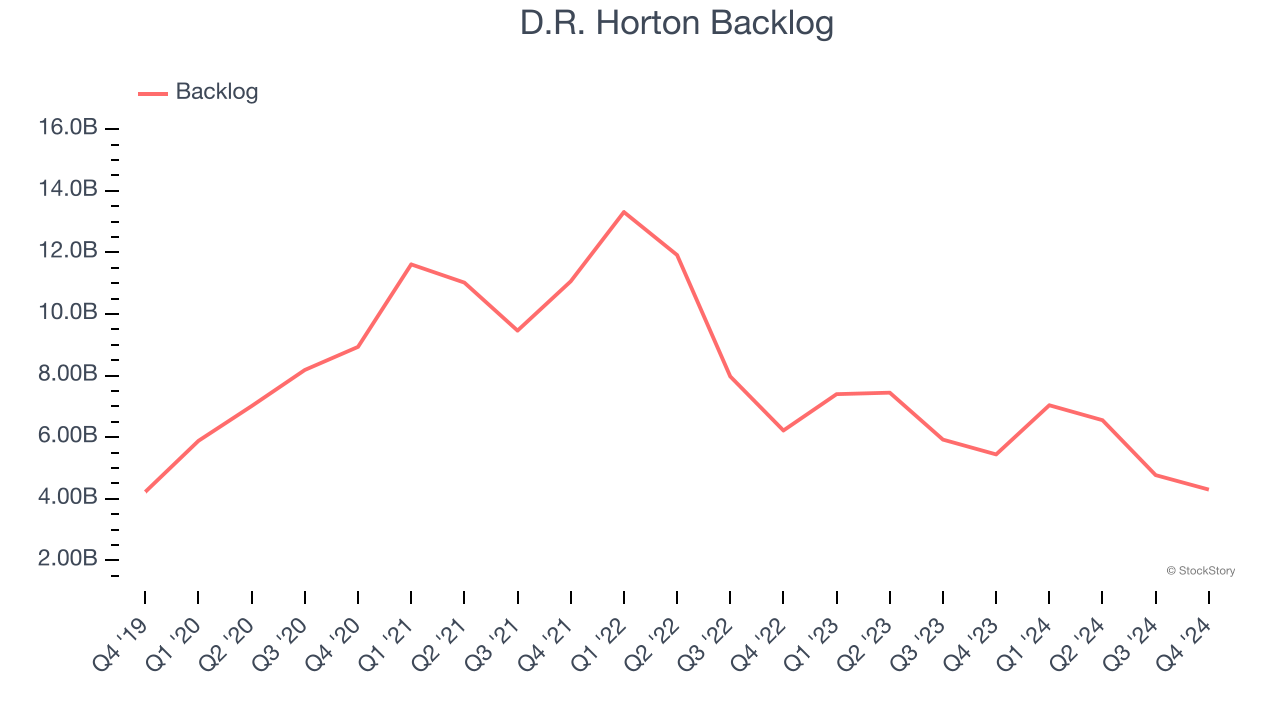
This quarter, D.R. Horton’s revenue fell by 1.5% year on year to $7.61 billion but beat Wall Street’s estimates by 7.6%.
Looking ahead, sell-side analysts expect revenue to grow 2.9% over the next 12 months, similar to its two-year rate. This projection doesn't excite us and indicates its products and services will see some demand headwinds.
Today’s young investors won’t have read the timeless lessons in Gorilla Game: Picking Winners In High Technology because it was written more than 20 years ago when Microsoft and Apple were first establishing their supremacy. But if we apply the same principles, then enterprise software stocks leveraging their own generative AI capabilities may well be the Gorillas of the future. So, in that spirit, we are excited to present our Special Free Report on a profitable, fast-growing enterprise software stock that is already riding the automation wave and looking to catch the generative AI next.
Operating Margin
Operating margin is one of the best measures of profitability because it tells us how much money a company takes home after procuring and manufacturing its products, marketing and selling those products, and most importantly, keeping them relevant through research and development.
D.R. Horton has been a well-oiled machine over the last five years. It demonstrated elite profitability for an industrials business, boasting an average operating margin of 18.1%. This result was particularly impressive because of its low gross margin, which is mostly a factor of what it sells and takes huge shifts to move meaningfully. Companies have more control over their operating margins, and it’s a show of well-managed operations if they’re high when gross margins are low.
Looking at the trend in its profitability, D.R. Horton’s operating margin might have seen some fluctuations but has generally stayed the same over the last five years, highlighting the long-term consistency of its business.
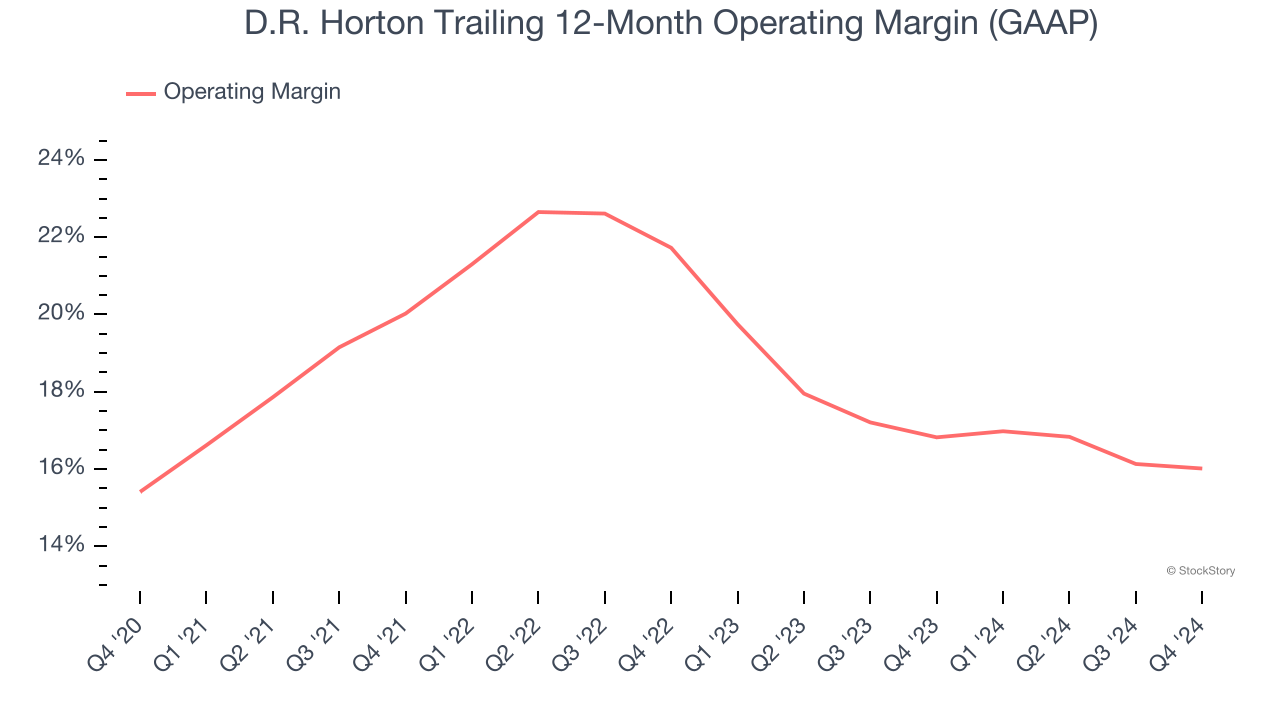
This quarter, D.R. Horton generated an operating profit margin of 14.6%, in line with the same quarter last year. This indicates the company’s cost structure has recently been stable.
Earnings Per Share
Revenue trends explain a company’s historical growth, but the long-term change in earnings per share (EPS) points to the profitability of that growth – for example, a company could inflate its sales through excessive spending on advertising and promotions.
D.R. Horton’s EPS grew at an astounding 24.7% compounded annual growth rate over the last five years, higher than its 15.2% annualized revenue growth. However, this alone doesn’t tell us much about its business quality because its operating margin didn’t expand.
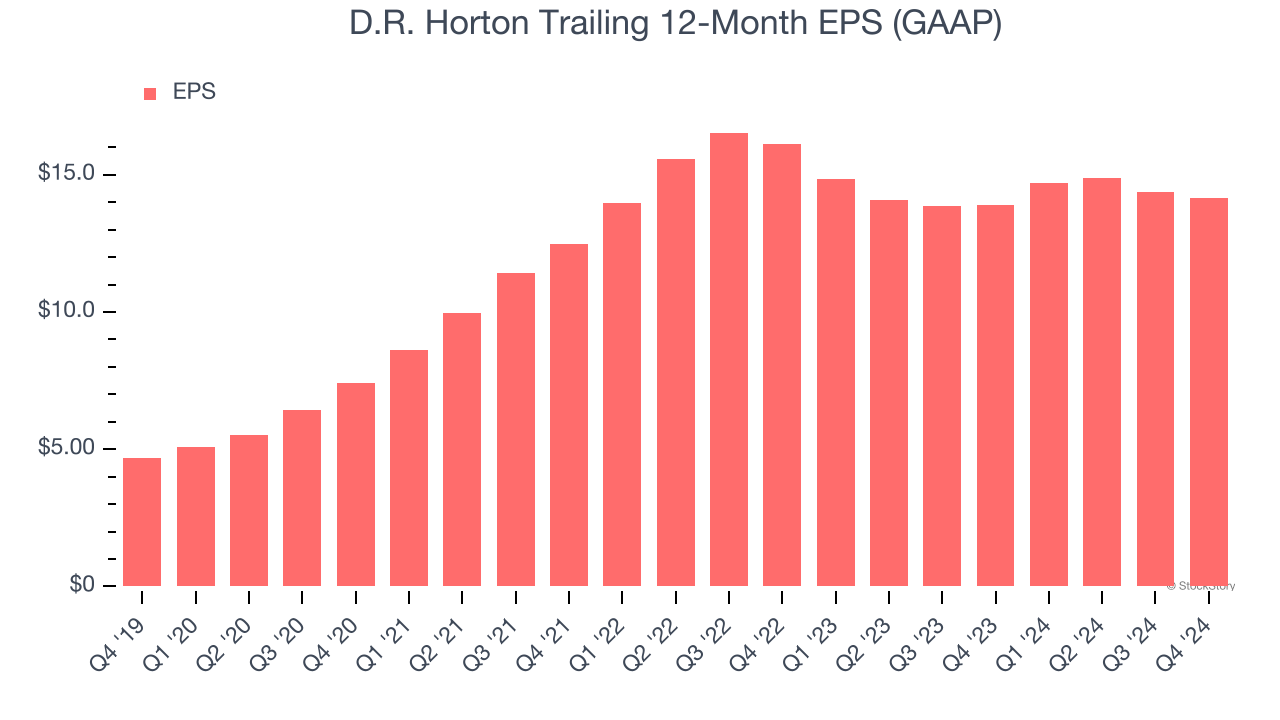
Diving into D.R. Horton’s quality of earnings can give us a better understanding of its performance. A five-year view shows that D.R. Horton has repurchased its stock, shrinking its share count by 13.4%. This tells us its EPS outperformed its revenue not because of increased operational efficiency but financial engineering, as buybacks boost per share earnings. 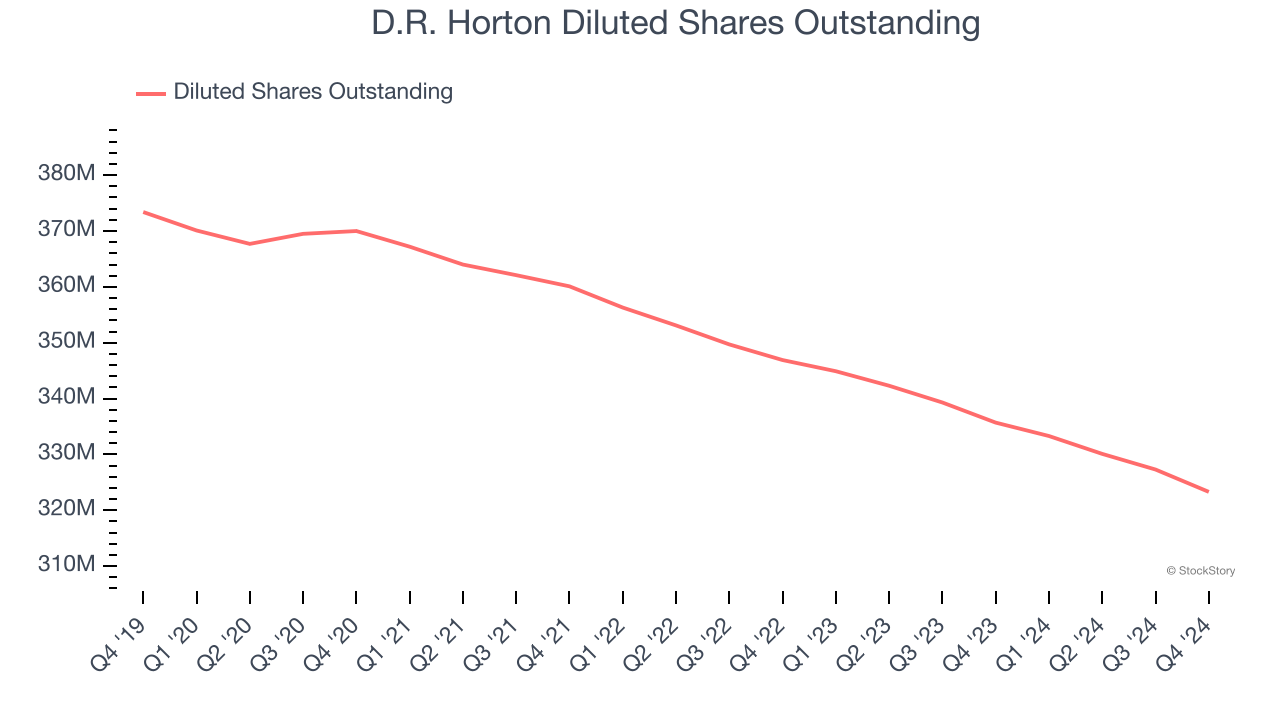
Like with revenue, we analyze EPS over a shorter period to see if we are missing a change in the business.
For D.R. Horton, its two-year annual EPS declines of 6.3% mark a reversal from its (seemingly) healthy five-year trend. We hope D.R. Horton can return to earnings growth in the future.
In Q4, D.R. Horton reported EPS at $2.61, down from $2.82 in the same quarter last year. Despite falling year on year, this print easily cleared analysts’ estimates. Over the next 12 months, Wall Street expects D.R. Horton’s full-year EPS of $14.15 to stay about the same.
Key Takeaways from D.R. Horton’s Q4 Results
We were impressed by how significantly D.R. Horton blew past analysts’ revenue, EPS, and EBITDA expectations this quarter. On the other hand, its full-year revenue guidance fell slightly short. Still, we think this was a decent quarter featuring some areas of strength. The stock traded up 5.3% to $155.50 immediately following the results.
Should you buy the stock or not? If you’re making that decision, you should consider the bigger picture of valuation, business qualities, as well as the latest earnings. We cover that in our actionable full research report which you can read here, it’s free.






